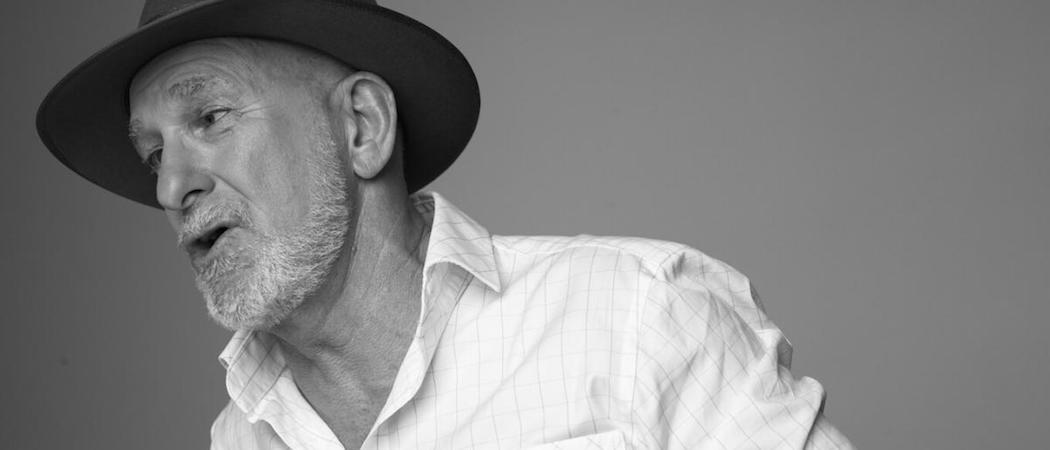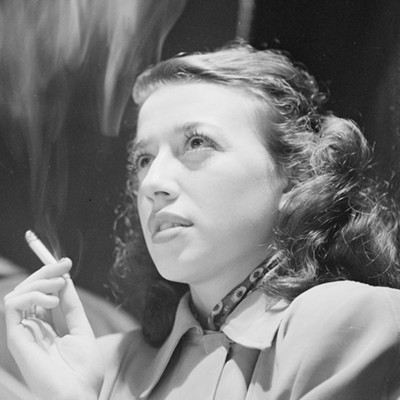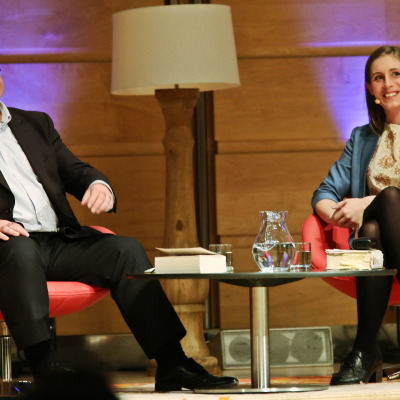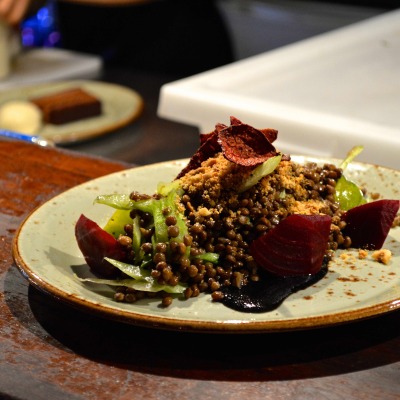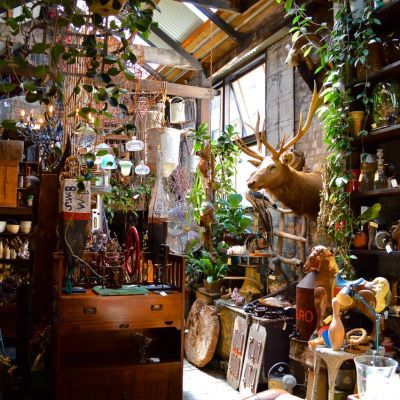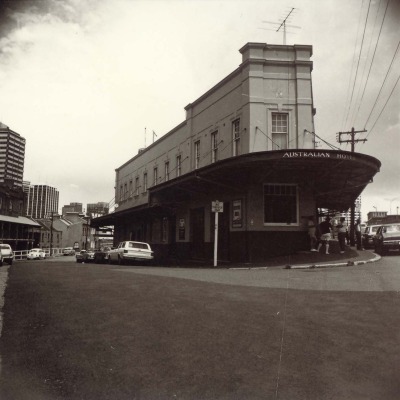Smelly Old Sydney was “On The Nose”
An occasional Sydney history ramble with cultural historian Warren Fahey
Old Sydney had a stink about it that many baby boomers will no doubt remember. Some smells were definitely, as the old-timers used to say, ‘on the bugle’, and others full of delight and intrigue.
Firstly allow me to offer a warning to my fellow boomers: sad to say but a scary loss of smell (and taste) occurs normally with ageing. This is mainly due to a degeneration of the nerves that control smell but modern lifestyle also throws the dice: nasal and sinus problems, certain medications, recreational sniffing, cigarette smoking and even head injury can contribute to your snout’s ability to smell effectively. Once you hit fifty it’s all downhill for your olfactory nerves and taste buds, and by eighty, you’ve reduced both by half. Considering the youth readership of this site this news must make for depressing reading.
Come with me on a nostalgic tour of old Sydney and sniff the pongs that were high on the olfactometer register.
I spent a good deal of my youth living at Ramsgate, on Botany Bay, and if forced to nominate one single smell from those days it would be the hot potato chips sold at the Ramsgate saltwater swimming baths known by us kids as ‘Pem’s Piss Pools’. Arthur ‘Pop’ Pemberton opened the complex in 1924 and ran it for forty-five years combining swimming pools, dance venue and, believe it or not, a mini zoo. The chips, and we never called them fries, always had the accompanying smell of wombat, dingo, roo and monkey poo. They tasted delicious and were my earliest memory of takeaway food.
In those days Botany Bay hadn’t turned to sludge. ‘Bing-eye’, the local fisherman, and his family trawled most mornings and would display their catch on the beach. Dad and I, refreshed from an early morning swim , often bought bream or flathead for breakfast. The smell of fresh fish frying is hard to beat. You wouldn’t dare eat anything from Botany Bay today.
The big stink night of the year was May 24th, ‘Bonfire’, ‘Cracker’ or ‘Guy Fawkes’ Night, celebrated around Empire Day. We hauled wheelbarrows of inflammable crap up to the beach on Grand Parade and competed to see which street could mount the highest bonfire. We guarded it night and day so the ‘enemy’ didn’t pinch anything or, worse still, set it alight. Old tyres stank the most and sent up piles of horrid black smoke. It was the firecrackers themselves that we really smelt. It seemed to us that each one had a particular and distinctive smell. Double Bungers were the loudest and smelliest and Jumping Jacks smelt of gunpowder, or so we thought. Catherine Wheels were considered woosy, Tom Thumbs rat-a-tat-tat noisy and Roman Candles and Fairy Wands smelt like old farts. Sadly the P.C police killed cracker night declaring it ‘dangerous’.
Going to the corner store was also an olfactory expedition. There were very few delicatessens but there were plenty of ‘Ham and Beef’ shops. These peculiar outlets were glorified sandwich shops where all sausages were called ‘garlic sausage’ despite having hardly any garlic. Devon, mortadella and ‘fancy’ ham were sliced and eaten with Kameruka or Coon cheese on ‘tank’ loaf (because it was shaped like a water tank) or Vienna ‘high top’ slices of white bread. Strong-smelling mustard pickles were a must!
One of Sydney’s sweetest smells came from the inner-city suburb of Camperdown where, bounded by Parramatta Road, Lyons Road and Pyrmont Bridge Road, from 1891 several biscuit manufacturers ‘baked on the premises’. The most famous was Weston’s, makers of the famous ‘Wagon Wheel’ and ‘Chocolate Wheaten’, who moved there in 1951. A mere suburb away, in Balmain, your nose would have itched with the all-invading stench of soapsuds manufacturer Lever and Kitchen.
When I was a young lad my big sister often took me to Maroubra beach. My job was to walk half a mile to the small shopping strip and order takeaway lunch – usually three or four baked rabbits, depending how many were in the days surfing safari. I can still smell that shop and those stringy, gamey rabbits prepared with oregano by an elderly man known as ‘Peter the Greek’. I had hardly seen a Greek let alone tasted oregano. This was in the fifties when roasted chicken only appeared on very special occasions, like Christmas or birthdays.
It wasn’t until the early 1960s that I smelt a real delicatessen. My mother often took me to the monumental Anthony Hordern’s department store in Goulburn Street, Sydney, to shop and, if I was lucky, to the top floor cafeteria, where there were more smells than you could poke a fork at. Anthony Horderns had 54 acres of retail and was the largest department store in the world. Around the corner in Hay Street, near the wonderful Capitol Theatre, was Cyril’s Delicatessen. Opened in 1959 this cornucopia of European delight sent my nose whirling. Here I smelt smoked salmon with dill, pickled herring, exotic stinky cheese and strings of sausages that looked like nothing I had ever seen or tasted. There was also black sour bread with caraway seeds – the reason for my Jewish mother’s visit. Cyril’s is still in the same place, still smells wonderfully European, and still worth a visit. The David Jones store Food Hall was another bewildering experience for my nosey nose as I sniffed a cavalcade that included pastries, seafood, smoked meats, cheese, cakes and groceries. Later on one of those darned American-styled ‘cookies baked on the spot’ arrived and their sickly sweet smell took over most of the basement.
Another city destination was Nock and Kirby’s store on George Street. I think my mother had a thing about Joe the Gadget Man, who was quite a Sydney celebrity. The smell of this gigantic emporium of hardware was overwhelming. I sniffed nails, paints, strange woodwork tools and bibs and bobs whose function bewildered me. It was then on to Clarence Street and The House of Hoffnung, an old fashioned wholesaler of everything and anything. They sold tobacco, golf balls, Manchester and 78 rpm recordings – and everything in between and spanned a retail history from 1852 to 1952.
The most intoxicating smell came from the window of the old Coles store in the city near King Street. It had a donut machine that was straight out of Willy Wonka as it scooped up batter and plunked them into boiling oil and we stared gob-smacked as the submerged donuts sprang to life and floated merrily queuing on a metal conveyor-belt headed for their multi-coloured icing. I often wonder where this extraordinary contraption ended its life. The sweetness of the donut counter followed us down the street and into our dreams.
Other city smells high on the register were the two men’s clothing stores Palmer’s (‘Palmers Will Suit You’) and the very posh Peape’s near Wynyard. Strong textile smells mixed with cigar and pipe smoke as men with bristle moustaches and blue shirts with button braces whispered, “Are you being served?”
Central Railway station was also a smelly place. Steam, fuelled by mountains of black coal, hissed and spurted along the station tracks and smelt absolutely intoxicating with its promise of travel to Terrigal, Goulburn and the Blue Mountains. In the station there was another delight under the massive sign ‘Railway Refreshment Room’. This cafeteria-style restaurant was always full of country bumpkins, over-dressed city folk and uncomfortable, rowdy children. The food was exciting for kids including the famous round railway pies, sausage rolls that looked like small house bricks, red and green jelly trifle, and the smell of strange coffee made with chicory.
Back home in Ramsgate we lived in Pasadena Street between Monterey and Hollywood Streets (I think the Town Planner had been to Los Angeles!). These were the last days of horse-drawn door-to-door deliveries where ‘John the Chinaman’ delivered fruit and vegetables so fresh the smell of celery, tomatoes and radish jumped out at you. As kids we had all been involved in ‘raids’ on the local Scarborough Park and nearby Brighton-le-Sands Chinese gardens. We squiggled down muddy canals, past cabbages and celery until we reached the holy grail – carrots – which we grabbed and hot-footed out of there before the Chinese gardeners sprayed us with saltpetre bullets. Carrots never smelt or tasted sweeter. Incidentally, my father, probably to dissuade us kids from our attacks on the Chinese gardens, always told us that they used ‘night soil’ on their vegetables. It took me quite a while to work out what ‘night soil’ actually was. For children raised chanting disgusting rhymes like ‘Captain Cook’ this probably is par for the course.
Captain Cook did a poop,
Behind the kitchen door,
His brother came and ate it up,
Then he did some more.
And there were rotten smells. I’m not sure where the colloquial expression Dutch Oven originated but all kids raised in the fifties will know it refers to that dreadful game where everyone farts under a blanket to see who can stay under the longest! And when someone broke wind the common response was: “Who flung dung?”
It is not surprising that one of our most interesting smellathons came with the annual Royal Easter Show when it was staged at Moore Park. We would run from cows to horses, chooks to pigs, pinching our noses yelling which one smelt the worst. The old showground also offered some wonderful aromas and none could beat the smell of the Tasmanian Brownell Potato Chip outlet or the Showbag Hall which simply screamed out “Sugar!” Sydney Showground also hosted seasons of stockcar racing on Saturday nights and the grimy exhaust smoke melded finely with the aroma of saveloys and tomato sauce - were never called hot dogs!
Back at Ramsgate the baker delivered daily bread and the smell wafting from his van was always magical, especially when the Easter hot cross buns arrived. The baker’s arrival was usually marred by my father loudly yelling, “Quick! Warren!” and I knew to race with the sugar bag and shovel, chase the horse and cart, and collect the precious manure for our garden, before my chief manure competitor, Mrs O’Connell scooped it up. These were hard times for a kid.
As an older, adventurous young lad my nose led me on a merry dance through the streets of Sydney. Rowe Street’s Lincoln Coffee Shop, a favourite bohemian haunt, and nearby Penguin Bookshop were intriguing but the old Adyar Bookshop next door to the Bligh Street Art Cinema was overwhelming with incense befitting a shop that had books on fairies, astral travelling and pictures of Krishnamurti and Madame Blavatski. It was quite some years before I encountered a bookshop with so much characteristic smell and that was Bob Gould’s Goulburn Street emporium where hundreds of thousands of books precariously hung to the walls threatening to topple down on innocent
readers, and the ever-present Gould, splendid in his Bombay Bloomer floppy shorts and braces, surrounded by the smell of mostly dead people’s books.
When older I was obviously no wiser as I followed my nose into some dubious eating establishments. Repin’s Coffee Shop near Wynyard was a regular meeting place for my friends before we went to the Youth Hostels Association meetings in Clarence Street. Repin’s, a small chain, had an espresso machine before they were common. It was always “Cappuccino and Black Forest Cake”; both smelt very adult. Next were visits to the Cahill’s chain of themed restaurants: Dutch Inn, Bavarian Hofbauer House, Tudor Inn, Swiss Inn and a strange tropical island theme that I never quite understood. The food and accompanying smells I did understand since the menus were essentially the same with staff in different uniforms. A schnitzel is a schnitzel whatever you call it. Far better dining was available on ‘Greek Street’, as Elizabeth Street opposite Hyde Park was known. The Minerva was my favourite and, in the 1960s, I would sit down to aromatic stews and roasts full of garlic and oregano, strong-smelling feta (which they served with Kalamata olives and a whole quartered raw brown onion) and finish with rose-water infused custards. Delicious. The Hellenic Club offered similar delights and is still there with similar dishes.
Chinatown had enticing smells too. The old Dixon Street strip was so exotic with smells that confused red glossy roasted ducks with weird drain stench, fresh market greens with strange bundles of pungent herbs. This was heady stuff for any adventurer. One favourite was the Malaya Restaurant when it was on George Street and resembled a railway tunnel, complete with brown walls and enough spicy smells to tease any appetite.
When I eventually moved back to Paddington in the late nineteen sixties, the nearby suburb of Darlinghurst had a peculiar smell that took me some time to nasally navigate – it was the Sergeant’s Pie Factory. A massive complex on Liverpool Street, this was the home of those then familiar round pies beloved of genuine Aussie pie eaters. Rich in gravy and chewy meat these pies smelt heavenly, as did their factory.
I was born in Paddington and lived there most of my working life. It had a history of smells, mostly unpleasant, that reflected its terraced housing with outdoor dunnies, which were too close for comfort, and its past as a centre for small industry. The overriding smell up the Paddington nose in the fifties and early sixties was, like much of the inner city, that of coke - the black fuel - not the white stuff. Bags of coke were delivered into the suburb for heating and hot water systems and the stench permeated the surrounding suburbs.
Another local smell was burnt snags and steak for this was the grand period of the 1960s and 70s when Paddo’s pubs had beer gardens open to the sky, and cooking your own meat on the pub’s BBQ was almost a sport. You’d buy your steak, snags and chops and compete with two-dozen other determined ‘self cookers’. Great fun but all banished (along with jazz, poetry and folk music) when the hotels went all posh, closed in their gardens to make ‘restaurant dining areas’ and installed dull-sounding recorded music. And if that doesn’t stink I don’t know what does!
Most of these old Sydney smells have disappeared up exhaust fans or been replaced by even nastier smelling chemically charged room deodorisers. The smells are gone but the memories linger on.
Warren Fahey is a cultural historian, author, broadcaster and performer. Keep an eye on the Sydney Scoop Calendar for details of the Sydney leg of his touring show, Dead Men Talking, celebrating the work of Australian poets Banjo Patterson and Henry Lawson.
Visit Warren's website at www.warrenfahey.com.
